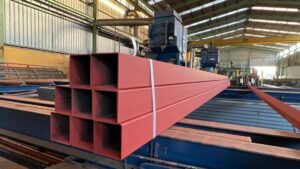The green hydrogen requirement to fuel green steelmaking in Europe would amount to 1.2 million tonnes by 2030, below the EU’s Hydrogen Strategy target, but the steel industry will be fighting over the resource with other sectors, says Jeffries. Green hydrogen costs would meanwhile need to decrease 75% to $1.20/kg for H2-DRI/EAF costs to break even with the traditional BF-BOF route.
As EU steelmakers decarbonise, electric arc furnaces’ share in the bloc’s steelmaking will rise to 55% in 2030, with iron ore and scrap demand up 17% and 4% versus 2019, but coking coal demand down 13%, says Jeffries.
The industry has identified hydrogen-based iron-making as the path to decarbonisation. However, the question is, “will hydrogen, and specifically green hydrogen, be available to meet these ambitions?” Jeffries points out in a report seen by Kallanish.
Under Jeffries’ “business as usual” scenario, European hydrogen demand is forecast to increase – relative to 2015 – by 48% by 2030 and 140% by 2050. In the ambitious scenario, these increases are 105% and 593% respectively. Heating and power for buildings, and transportation are the two largest incremental drivers of hydrogen demand, contributing 65% of the total increase by 2050. Industry energy, which includes steelmaking, is forecast to be 12% of the incremental demand.
Jeffries estimates electricity usage from steelmaking will grow 135% by 2030 versus 2019. Despite hydrogen-based steelmaking forecast comprising some 10% of EU steelmaking by 2030, it would represent 54% of sector electricity consumption.
The forecast for $1.20/kg hydrogen cost being required for H2-DRI/EAF to break even with the BF-BOF route is based on long-term assumptions for iron ore of $80/tonne, coking coal of $150/t and electricity of €50/MWh.
Vale’s green briquette venture meanwhile provides an example of iron ore providers moving down the value chain and taking ownership of Scope 3 emissions, Jeffries observes. “This may provide an illustration of similar moves by Australian miners and the possible build out of renewable resources and energy infrastructure,” it comments. “However, such a scenario to leverage Australia’s natural resource advantage needs government support at all levels.”
Adam Smith Germany






